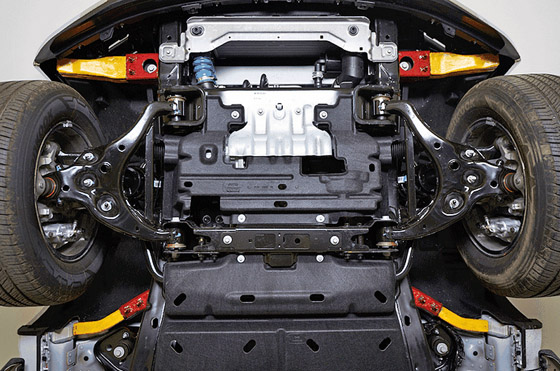wawajake
Veteran Member
Did they even test the 2016 Regular Cab or SuperCrew F150?
Good question ! why four GM models and only one Ford
Did they even test the 2016 Regular Cab or SuperCrew F150?
Good question ! why four GM models and only one Ford
Once again, you failed at reading the article. See below.Hmmmmmm I didn't say they failed , I asked "did they fail" and stated it was poorly written report. Seems reading is a common failure. Quite frankly the Chev and the GMC models are the same truck (at least frame wise)... so actually they could of just as easily tested two GM models and added in a second Ford model. But I guess it is easy to see why the test was posted. (here at TBN and there)
Per the article, the Supercrew was tested last year and did well (it received "Good" scores in all categories): Ford F-15� crew cab aces IIHS testsDid they even test the 2016 Regular Cab or SuperCrew F150?
The important thing is it states what you want to hear.... ..ignore anything else obviously missed (GM models did not change in past two years why in report. Small overlap test not even listed before this year so why not include all models for all makes (as can be seen by digging deeper in report.........)
What do you think I want to hear?The important thing is it states what you want to hear.... ..ignore anything else obviously missed
Further on the subject:According to IIHS, the test was done specifically because Automotive News alerted it to extra safety equipment that Ford installed on the top-selling SuperCrew model -- the single model that IIHS normally tests -- but not on its Regular Cab or SuperCab F-150s. Other pickup makers will be subject to new tests on their lower-volume models starting next year, an IIHS spokesman said.
Shame on Ford for trying to game the system and shame on the other brands for not getting their trucks ready for this.http://news.pickuptrucks.com/2015/08/who-wins-when-iihs-crash-tests-more-vehicles.html said:A lot has been said about the results of the Insurance Institute for Highway Safety's small overlap front crash-testing of the 2015 Ford F-150 SuperCrew and SuperCab. IIHS decided to test different cab configurations after it was brought to its attention that front wheel blocker bars are included on the higher-volume four-door crew-cab Ford but are not included on the smaller extended-cab or regular-cab versions.
As a result, the 2015 SuperCrew got the IIHS Top Safety Pick designation while the extended-cab version did not because it achieved a marginal rating on a scale of good, acceptable, marginal and poor on the small overlap front crash test. To get the Top Safety Pick award, a vehicle must get a good or acceptable rating in that test and a good in the other four tests. It should be noted that the SuperCab did achieve a rating of good in the other tests.
When media outlets found out about the wheel-well blocker issue, it didn't take long for many journalists to cry "foul" and accuse Ford of trying to "game the system" by taking advantage of the fact that the IIHS had never tested all of the F-150's cab configurations. Until now IIHS has only tested (it purchases each of its test vehicles from private dealerships) the volume leaders in a vehicle's lineup, which, in the pickup segment nowadays, is the crew-cab model. (We should note that IIHS is likely to be more comprehensive in its vehicle testing in the future to detect differences like those found in the F-150.)
Common sense dictates that if a vehicle has a slightly different size, shape, mass and structural configuration that it might get slightly or significantly different crush and deflection results when involved in an offset collision (in this case, offset on the driver's side by 25 percent of the total width of the pickup). And that's exactly what the IIHS found when it tested the F-150's less popular extended-cab version. Extended cabs are estimated to be 20 to 25 percent of total F-150 sales; regular cabs account for less than 5 percent.
The question here is whether Ford is at fault for treating each of its cab configurations differently (all three cab versions did receive a five-star rating from the National Highway Traffic Safety Administration, the max for its tests), including the "right amount" of structural support necessary for each cab, or if all vehicles with the same name should meet similar crash-test requirements. The issue is tricky. Was Ford responsible for IIHS not including other cab versions to see if they would test differently on the small overlap front test? The answer to both questions is probably not. And remember the other truckmakers have not had different cab configurations tested by IIHS either; they too have only had their high-volume players tested.
For the sake of argument, if Ford had only included those deflection bars (highlighted in yellow and red in the photo below) at the front and rear of the wheel well on the units tested by the IIHS, then accusing Ford of making a vehicle just for this test might make some sense. But as near as we can tell, that's not what happened here. Instead, it sounds like we have a test that's going to be conducted on all pickup truck cab configurations (or at least crew and extended cabs) from now on. That will have the eventual impact of making truck owners safer if, heaven forbid, they find themselves in an accident.

The Ford SuperCrew scored 'Good' last year and was not changed for this year. The SuperCab was changed to add an additional support bar (that was on the SuperCrew last year). I don't think that the regular cab Ford was updated, so no need to test.